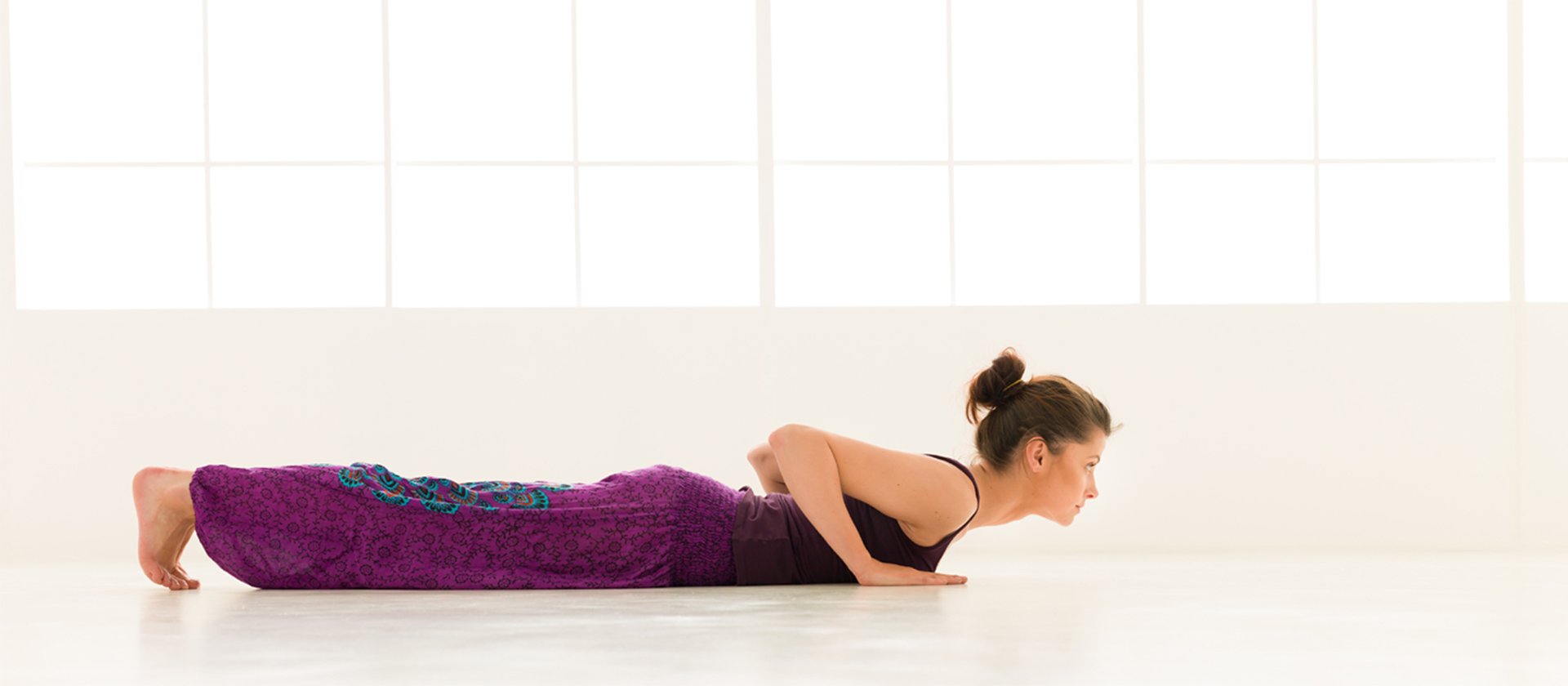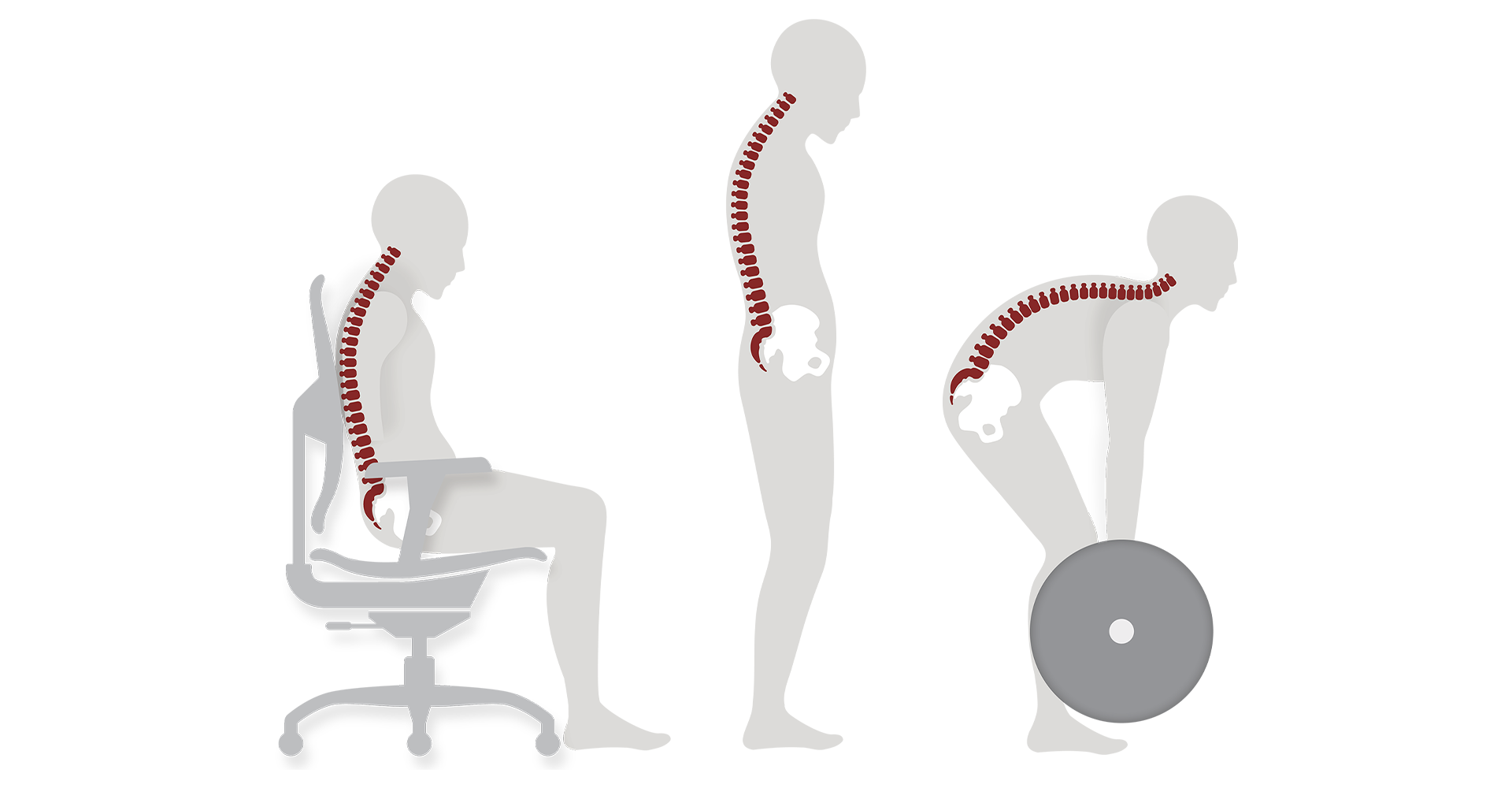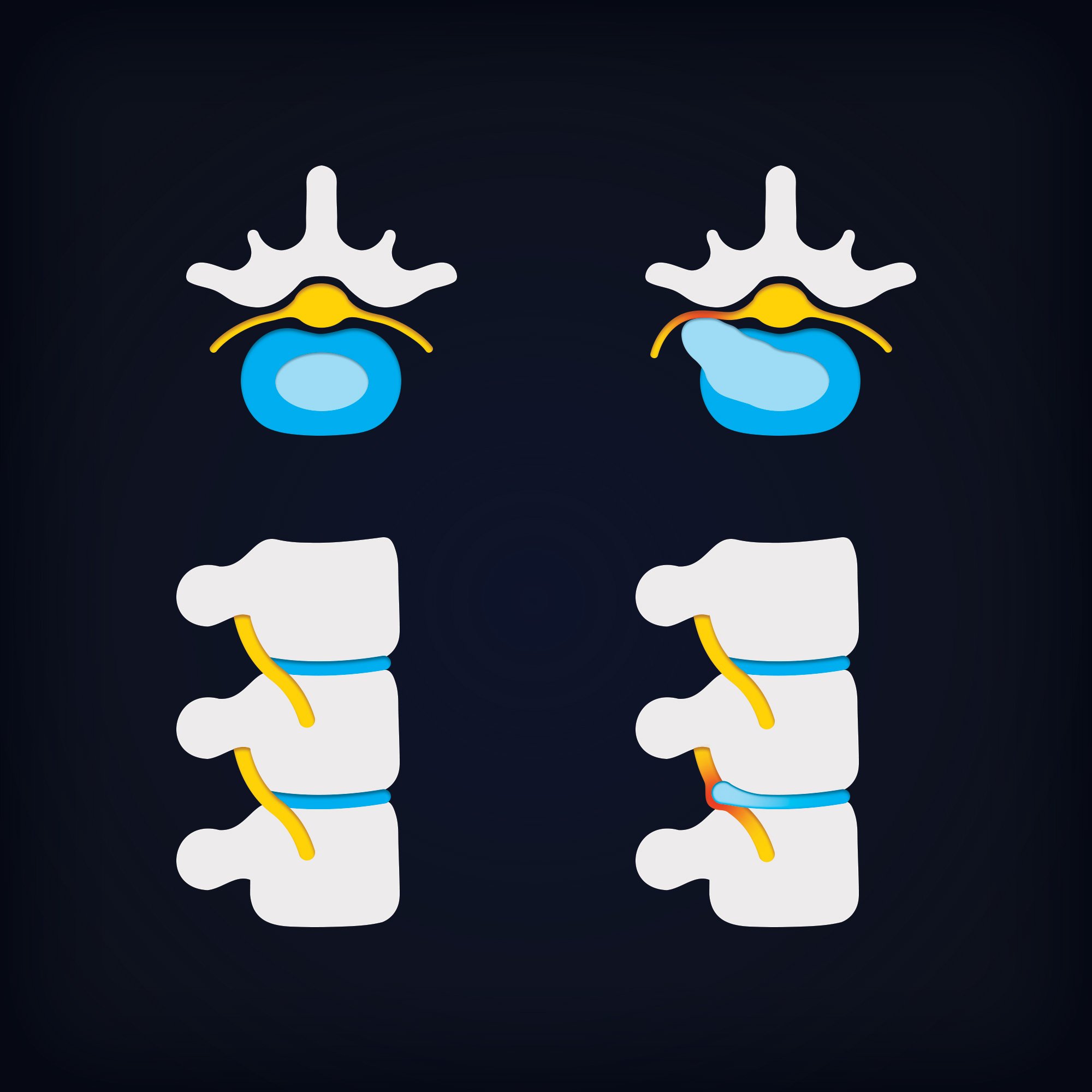Quoting the great Jacques-Yves Cousteau:
“From birth, man carries the weight of gravity on his shoulders.”
Gravity is an external force that presses down on us daily, keeping our feet planted on the earth. But it s sitting in an office chair all day, we use our core and peripheral muscles to hold up our body weight up and maintain an upright posture.
GRAVITY AND THE OFFICE CHAIR ARE FIGHTING AGAINST US
The traditional office chair doesn’t support you in the right places! So, when not supported properly by the office chair, we become fatigued and move to a slumped/relaxed posture. We slide forward on our seat and RECLINE our upper back in our office chair as pictured below.
Recline has been the traditional office chair feature touted as the “solution” for the past 30 years.
But is reclining the best solution to taking a break from gravity? Let’s look at this overlay of the skeleton and analyze what is happening to the body in this position.
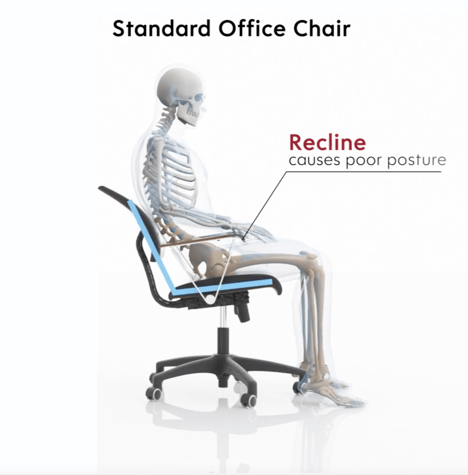
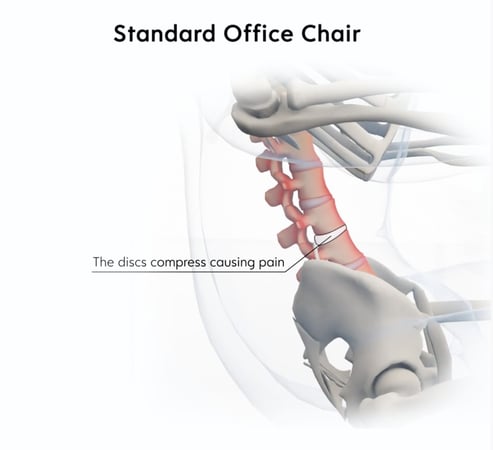
See how the spine is shaped like a “C”?
This is a big NO-NO for spine and disc health. In this flexed position the intervertebral discs between each vertebra in the spine are placed under an extreme amount of stress. Such flexed stress can predispose discs to herniate backward and create low back pain .1
Look at the position of the head relative to the spine. It is shifted forward in front of the spinal column to be able to view the screen and to counteract the C-shaped spine. This result is every physical therapist’s nightmare- FORWARD HEAD POSTURE! This condition is responsible for a whole slew of problems that result in the rest of the body: headaches, neck pain, shoulder pain, hip pain, butt pain, muscle imbalance, and of course, LOW BACK PAIN!
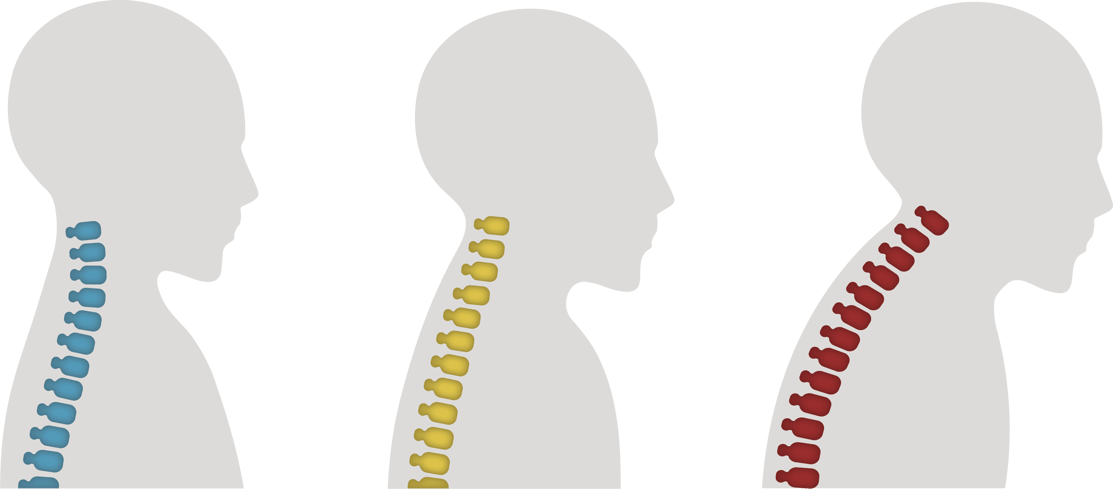
What is the solution???
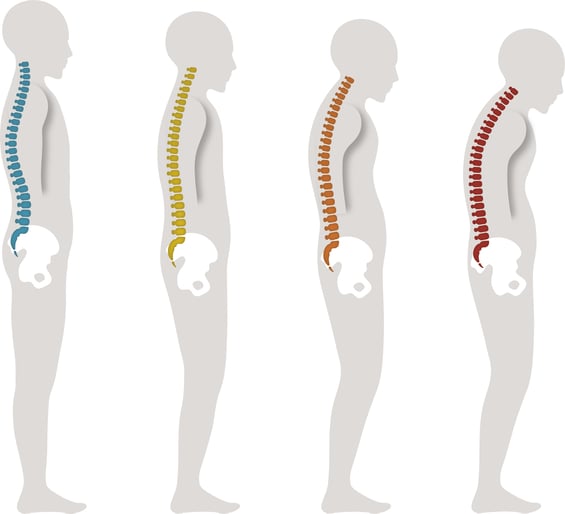
The overarching goal of sitting is to maintain that neutral “S” curve of your spine rather than the slumped “C” curve to protect your back and promote good muscle balance.
Sitting in that slumped posture over time, our muscles and spine will slowly adapt to this position. Muscle imbalances will place us at risk for pain and injury and could ultimately cause poor standing posture. Office chairs that promote a neutral posture and provide TILT also maintain proper posture when relaxing.
Reference:
- Makhsous M, Lin F, Bankard J, Hendrix RW, Hepler M, Press J. Biomechanical effects of sitting with adjustable ischial and lumbar support on occupationallow back pain: evaluation of sitting load and back muscle activity. BMC Musculoskelet Disord 2009; 10, 17.
Recent Post

Gentle Back Exercises for Lower Back Pain & Herniated Discs
February 17, 2025Adding a cushion to your office or gaming chair...
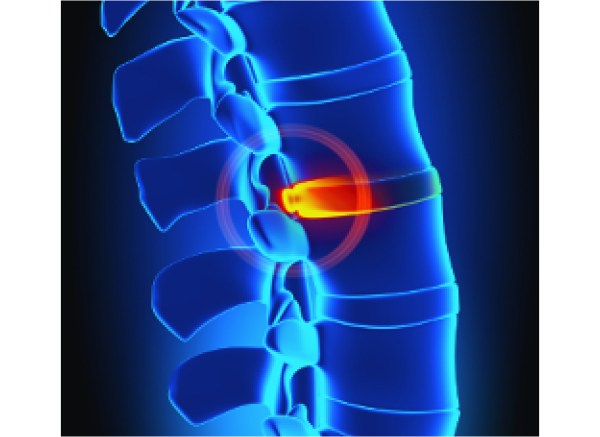
Bulging Disc vs. Herniated Disc:
February 5, 2025Adding a cushion to your office or gaming chair...

Adding a cushion to your office or gaming chair...





